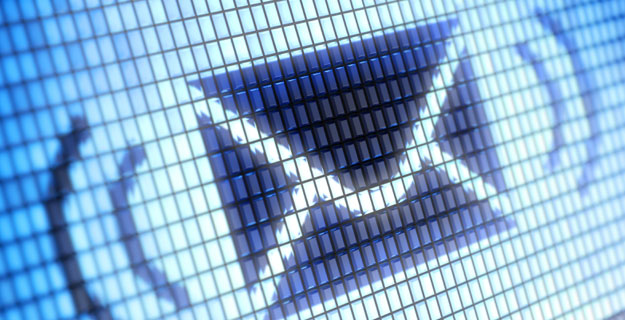
Everyone wants more productive time in their day. But how can you make better use of your time? One issue that has become more challenging in recent years is how to communicate effectively given the masses of emails most business professionals send and receive every day. In the quest for more efficient communication methods, this post explores one approach to productivity and time management: the idea of trying to reach ‘Inbox Zero’.
Inbox zero is a concept thought up by Merlin Mann, creator of the productivity site 43folders.com. The idea is to get the emails in your inbox down to zero – or at least as close to that as possible – to counteract the distracting, often stressful, effects of email on your work and your life, now that we receive more emails than ever.
To reach this point, Merlin suggests a number of strategies, such as only processing emails every couple of hours and creating folders for messages that require an action. Inbox zero has been seen as a way of reaching a zen-like state (I’m on top of my email = I’m in control of my life). But is it really a sensible goal to strive towards?
Here are 3 reasons why inbox zero may not work for you:
1. Clearing out Emails Can Be a Distraction in Itself
Once you enter the rabbit hole of your inbox, distractions abound. Even the simplest of emails which don’t require direct action can set you off on a loop of activity as you go off on tangents. On top of this, processing email into folders requires you set up a sufficient folder categorization scheme to handle the barrage of emails you receive. This can lead you to spend more time on filing emails into the right place than if you were to just quickly read the email and leave it in your inbox.
2. Folders Can Create an Artificial Sense of Security
To try and achieve inbox zero, you may be tempted to automatically route many incoming messages to a separate folder, in order to avoid very few emails showing up in your inbox in the first place. Though you may more easily achieve an effective inbox zero by doing so, all you’re doing is shifting the mess elsewhere to create a false sense of accomplishment. The emails you divert may still need processing, but they are now just in a different place, or scattered amongst several folders. In some ways this actually may hinder you from efficiently and effectively dealing with all the incoming mail that you really should read.
3. Getting Lost in the Detail
When reaching zero is the goal, it’s all too easy to get lost in this activity to the detriment of more important work tasks. While you are striving to keep your inbox clean, you may come across emails which do require attention but aren’t a high priority, but because of the inbox zero approach, you will likely end up taking the time to reply to these rather than complete higher priority, non-email items you have on your to-do list. The bigger picture and overall goal should be to reduce stress levels and increase productivity, but by following the inbox zero approach you can get caught up in striving to bring the number of emails down at the expense of more productive work activities.
Inbox Zero Summary
Getting caught up on bringing the inbox down to zero is a chore in itself, and still leaves you as a slave to your email. By its very nature, email is constant; you can’t stop the flow, and constantly trying to gain temporary control can be all-consuming. Moreover, having zero emails in your inbox is not a magic bullet – you may feel less stressed, but it won’t get the rest of your work done for you!
Email is just part of your overall work day, and should be viewed as such. That said, it’s certainly true that email overload can drag you down, so it’s worth implementing smart tactics for managing your emails. However, perhaps getting your inbox down to zero shouldn’t be the goal.
Next post I’ll provide 5 tips on managing your email, without striving for the hard-to-reach inbox zero.









